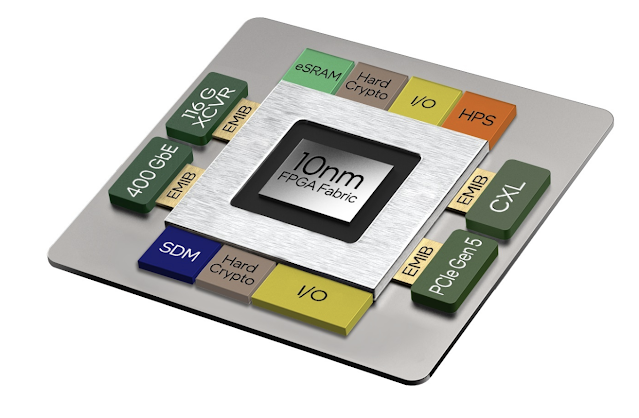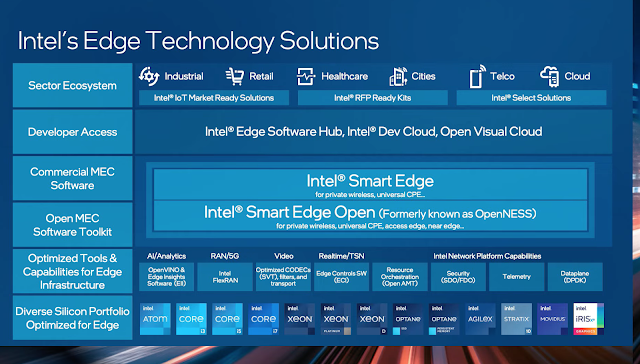In a virtual event ahead of Mobile World Congress, Intel showcased a number of foundational technologies and products that position the company for continued leadership in 5G virtual radio access network (vRAN) and edge deployments. This includes the following product announcements:
- Intel Agilex FPGA family is expanding, with a new FPGA with integrated cryptography acceleration that can support MACSec in 5G applications. This adds another layer of security to vRAN at the fronthaul, midhaul and backhaul levels.
- Intel Ethernet 800 Series family is expanding, with Intel’s first SyncE capable Ethernet Adapter that is designed for space-constrained systems on the edge, and well-suited for both high-bandwidth 4G and 5G RAN as well as other time- and latency-sensitive applications in sectors such as industrial, financial and energy.
In addition, Intel Smart Edge, which consists of two software offerings for the multi-access edge computing layer, will now have a unified architecture and codebase to help customers onboard and manage edge applications and network functions. Intel Smart Edge is commercial software focused on enterprise on-premise use cases, such as private networks and universal Customer Premise equipment. The evolved and enhanced Intel Smart Edge Open (formerly known as OpenNESS) is an open software toolkit that enables developers to build highly optimized and performant edge platforms.
The virtual event also highlighted key partnerships for Intel, including:
- Reliance Jio announced it will do co-innovations with Intel in 5G radio and wireless core, and collaborate in other associate areas that include AI, cloud and edge computing, which will help it as they deploy 5G.
- Deutsche Telekom is using Intel FlexRAN technology with accelerators in O-RAN Town, in the O-RAN network it is deploying in Neubrandenburg, Germany — a city of 65,000 people spread out over 33 square miles. The company is relying on Intel as a technology partner as it delivers high-performance RAN at scale.
- DISH Wireless relies on Intel’s contributions to the 5G ecosystem as it builds out the first cloud-native 5G network in the United States. The launch in its first city, Las Vegas, as well as its nationwide network, will be deployed on infrastructure powered by Intel technology in the network core, access and edge.
- Cohere is pioneering a new approach to improve spectrum utilization by leveraging capabilities in FlexRAN. It is integrating and optimizing spectrum multiplier software in the RAN intelligent controller. Cohere’s testing shows its Delay Doppler spatial multiplexing technology is improving channel estimation and delivering up to a two-times improvement in spectrum utilization for operators. That’s what Vodafone has seen in 700Mhz testing in its labs.
“Network transformation is critical to unleash the possibilities of 5G and maximize the rise of the edge to create new and better business outcomes for our customers across the globe. As the leading network silicon provider, we have been driving this shift to virtualizing the core to access to edge, and implementing edge computing capabilities with our decade of experience, to power our society’s digital revolution”, said Dan Rodriguez, Intel corporate vice president, Network Platforms Group.




















